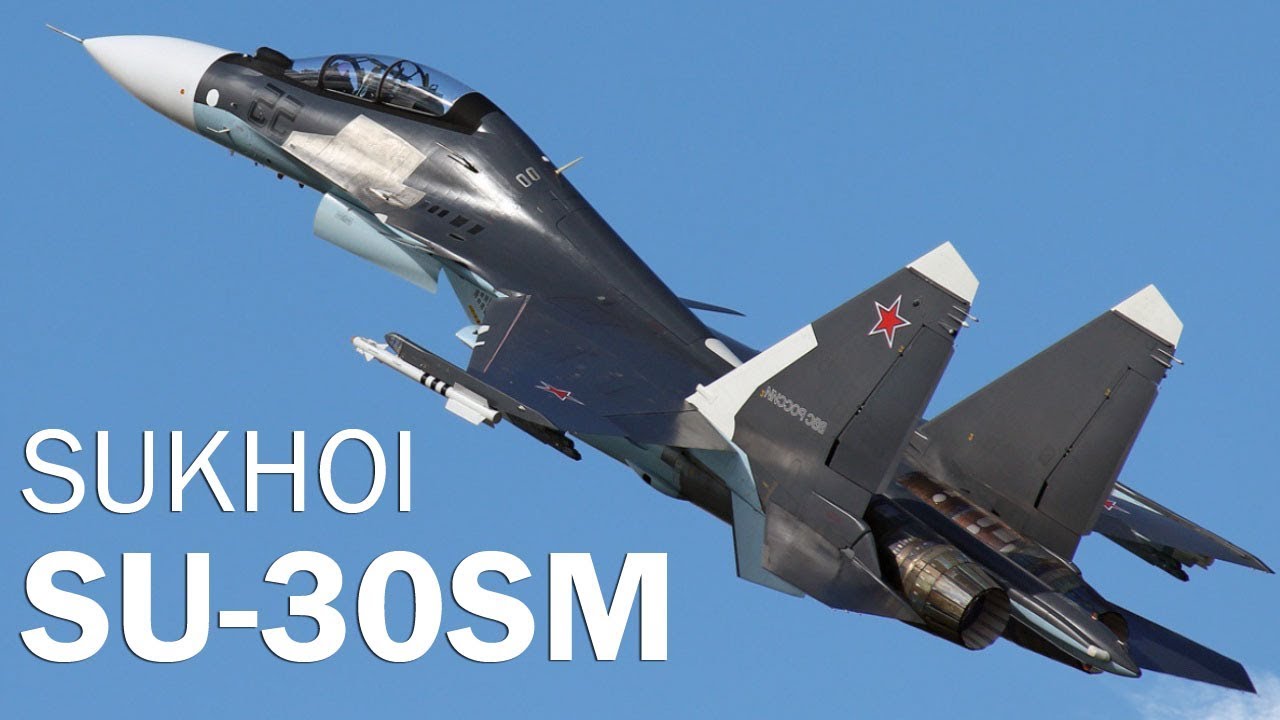Russia is effectively using its Su-35S & Su-30SM fighters operating in sync as a two-aircraft package to strike Ukrainian ground targets and degrade Ukrainian air defense systems simultaneously.
On November 6, 2022, Izvestia reported that the crew of Russian multipurpose fighters, Su-30SM and Su-35S, identified and destroyed a Ukrainian military aircraft.
Russian Ministry of Defence (RuMoD) footage accompanying the Izvestia report shows a Su-35S armed with 2 RVV-MD short-range missiles, 2 RVV-SD medium-range missiles, and 2 Kh-31P anti-radiation missiles (ARM) start-up and a take-off.
Next, the footage shows the view from the fighter’s cockpit at a high altitude. You see the launch of a long-range air-to-air missile through the pilot’s head-up display. A few seconds after launching the missile, the Su-35S breaks off from the attack to the left.
Next, the video shows a Su-30SM on the ground taxiing out and then taking off. The fighter is carrying an air-to-air missile weapon load similar to the Su-35S – 2 RVV-SD and 2 RVV-MD.
Instead of the 2 Kh-31P ARMs carried by the Su-35S, the Su-30SM is seen carrying 2 Kh-29 air-to-surface missiles (ASMs). Cockpit view footage shows the Su-30SM operating at low altitudes before landing back at base.
Around a week ago, the RuMoD released similar video footage claiming a package of Su-35S and Su-30SM had downed a Ukrainian fighter that was later identified as a Su-24.
On both occasions, the Su-35S fighter was armed with RVV-MD and RVV-SD air-to-air missiles and Kh-31P anti-radiation missiles. The Su-30SM, with similar air-to-air missiles but Kh-29 ASMs instead of Kh-31P ARMs.

The Kh-31P is designed to destroy medium and long-range SAM systems’ radars, air operations control radars, and early warning radars. It features a passive radar guidance system capable of operating in a broad band of frequencies.
The Kh-29 is optimized for attacking visually observed hardened ground targets, such as big railway and highway bridges, industrial installations, concrete runways, aircraft in reinforced concrete shelters, and hardened defensive positions.
There are two variants of the Kh-29 missile – Kh-29L and Kh-29TE. The Kh-29TE missile is equipped with a passive TV guidance system, and the Kh-29L – with a semi-active laser guidance system using reflected laser illumination.
Tactics
When operating as a two-aircraft package, the Su-30SM operates as a ground attack fighter, and the Su-35S as an air dominance fighter providing top cover to the Su-30SM.
The Su-35S stays at height and uses its powerful N135 Irbis-E radar to ensure airspace in the operating area is clear of adversary aerial threats.
In July 2022, TASS reported quoting a Rosoboronexport official, that the Su-35 is capable of coordinating the actions of other aircraft in the air, performing the functions of an airborne early warning and control aircraft (AWACS).
In normal track while scan mode the Irbis-3 radar can scan 120 degrees on either side and detect 3 m² targets at 200-km range.
With the Su-35S providing top cover, the Su-30SM descends to lower heights to visually acquire its target and destroy it and attack it using Kh-29 ASMs.
As EurAsian Times earlier reported, there are two variants of the Kh-29 missile – Kh-29L and Kh-29TE. The Kh-29TE missile is equipped with a passive TV guidance system, and the Kh-29L – with a semi-active laser guidance system using reflected laser illumination.
The missiles are armed with a high explosive penetrating warhead and an impact target sensor. They are powered by a single-mode solid-fuel rocket engine.
Both TV guidance and semi-active laser homing give the missile pinpoint accuracy. Rocket propulsion provides the missile with a lot of momentum, aiding in destruction and penetration.
The optical seeker of the Kh-29 can be locked to the target before release. Once locked, the optical seeker holds the lock even during maneuvers. That is, the aircraft can change speed, descend or rise by 1000m, and deviate by 30 degrees – this will not affect the accuracy of the hit.
While providing protective cover, if the sensors on board the Su-35S detect a radar emission, the fighter attacks the radar using its Kh-31P missiles.
If it detects a likely aerial threat, as would have happened in the two incidents reported by Russian MoD, the Su-35S positively identifies the threat and, if confirmed as hostile, shoots it down using long-range air-to-air missiles.
Besides the medium-range RVV-SD, the Su-35S has also been spotted carrying the much larger long-range RVV-BD missile on its underbelly pylon between the air intakes. The RVV-BD has a range of 300 km.
- Vijainder K Thakur is a retired IAF Jaguar pilot. He is also an author, software architect, entrepreneur, and military analyst. VIEWS PERSONAL
- Reach out to the author at vkthakur (at) gmail.com




